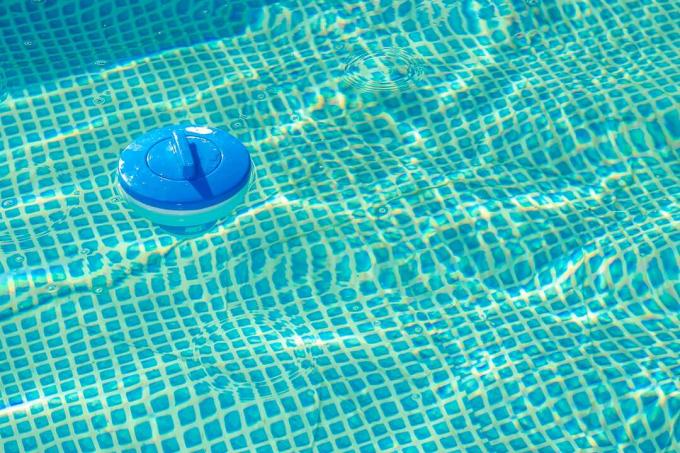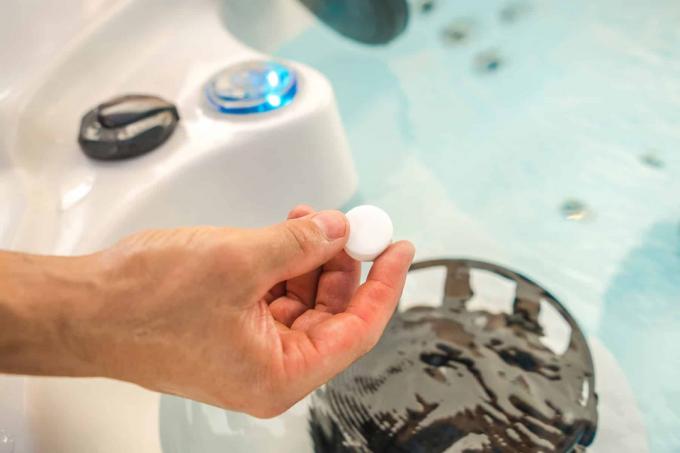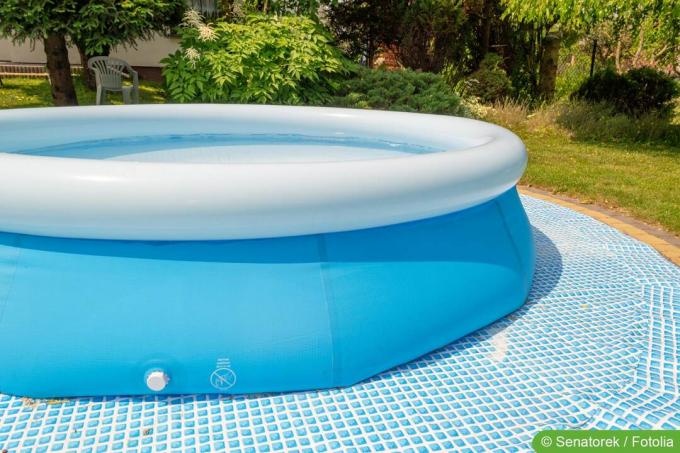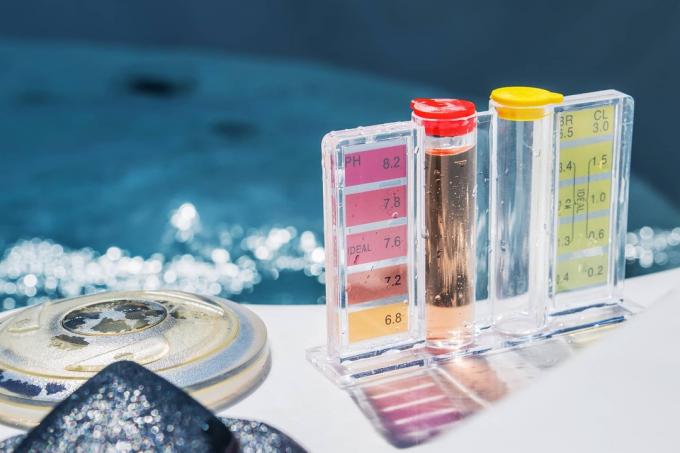

Table of contents
- time
- Suitable means
- dosage and chlorine content
- step by step
- frequently asked Questions
When the pool is about to be filled for the first time, the question of initial chlorination also arises. When and how is it carried out and what dosage is correct. This guide shows step by step how to do it.
time
The bathing season is about to begin and the pool is about to be filled for the first time. It is important to first clean all the elements and check the functionality of the filter. The first chlorination only takes place when the pool is completely filled.
Suitable means
Chlorine is available in various dosage forms and concentrations for the initial chlorination. Common are:
- liquid solution
- gas
- granules
- powder
- tablets
Liquid chlorine and gas are used much less frequently in private pools than the fixed versions. In addition, there are differences in the type of preparation during use. Some remedies can be added directly to the water or to the pump skimmer. For others, it is necessary to dissolve them beforehand and distribute them in liquid form. Here, as well as with the dosage, the manufacturer's information must be observed, which can vary greatly. There are products where one tablet is sufficient for 30,000 liters (30 cubic meters) of water or just for 10,000 liters. The same applies to all other forms.

Tip:
A look at the concentration and thus the dosage is worthwhile when making your selection. Products with a high concentration are particularly useful for larger pools, as a small amount is sufficient for them.
dosage and chlorine content
The optimum chlorine content is between 0.5 and 1.0 milligrams per liter of pool water, but it is constantly falling due to various influences. This includes:
- carried in or flown in dirt
- higher temperatures
- UV radiation
The chlorine is used up by its disinfecting function and some of it also evaporates. It can therefore make sense to achieve a slightly higher value for the first chlorination. However, the potential danger is that if used too early, it can irritate the eyes, mucous membranes and respiratory tract. Rash is also possible.
step by step
In order to achieve the right value during the initial chlorination, various steps are necessary.
- Clean and fill the pool completely.
- Calculate pool volume.
- Measure the pH of the water.
- Calculate the amount of chlorine required.
- Depending on the manufacturer's instructions, dissolve chlorine or add directly to water or skimmer.
- Distribute funds in the basin.
- Measure the chlorine level and add more chlorine if necessary.
Measuring the pH with an analyzer or test strips is important to create the optimal environment for the chlorine to work. The value should be between 7.0 and 7.4. If this is not the case, an adjustment can be made using suitable means.

If you are unsure how many liters your pool can hold, you can multiply the length, width and height together to arrive at the important value.
Tip:
The first chlorination should take place at least one day before the first use of the pool. On the one hand, this allows the agent to be distributed more evenly. On the other hand, any excess can be reduced by the time you swim for the first time, which reduces the risk of irritation.
frequently asked Questions
With fresh and clean water, it is usually not necessary to carry out a shock chlorination. It is sufficient to aim for the optimal value of 0.5 or better 1.0 milligrams per liter. With the higher selected value, you can wait longer before adding chlorine, which reduces the effort.
That depends on various factors. Temperature, degree of utilization, performance of the pump and the amount of invading or carried-in dirt particles play a decisive role here. It is therefore important to regularly test the chlorine content and add the agent as required. A general indication of the time interval is not possible.
Without the appropriate water care products, germs spread quickly in a pool. Streaky deposits on walls and floors, discoloration, cloudiness and bad smells are the noticeable and unpleasant consequences. The contaminated water can also cause infections and other health risks. Chlorination is therefore recommended in any case.
 Home editorial office
Home editorial office
Learn more about water in the garden

How quickly does chlorine break down?
How quickly chlorine breaks down in pool water is important information for a number of reasons. It is important to know which factors play a decisive role in the degradation rate. This guide shows which influences are decisive.

Too much chlorine in the pool: what to do?
If too much chlorine accidentally ends up in the pool or the chlorine value is inexplicably high, there are several measures you can take. This guide shows what can quickly and sustainably help and reduce the chlorine content.

Too much chlorine in the pool: swim anyway?
If too much chlorine has ended up in the pool, the question immediately arises as to whether bathing is still possible. What risks can this entail and what are the warning signs? Here are the answers.

Reducing chlorine levels in the pool: chlorine levels explained
Is the chlorine level in the pool too high and bathing is not possible? Then good advice does not have to be expensive, because the chlorine values can be easily reduced in several ways and thus brought into the optimal range.

How much chlorine in 1,000 liters of water?
Chlorine can keep pool water clear or, as shock chlorination, remove cloudiness and green discoloration. The question of how the right dosage and the optimal values look like arises again and again. This guide provides comprehensive answers.

Shock chlorination / shock chlorination with green water
If the pool water is milky or even green, shock chlorination can help. This guide to shock chlorination shows how to proceed, what dangers exist and what else needs to be taken into account.



